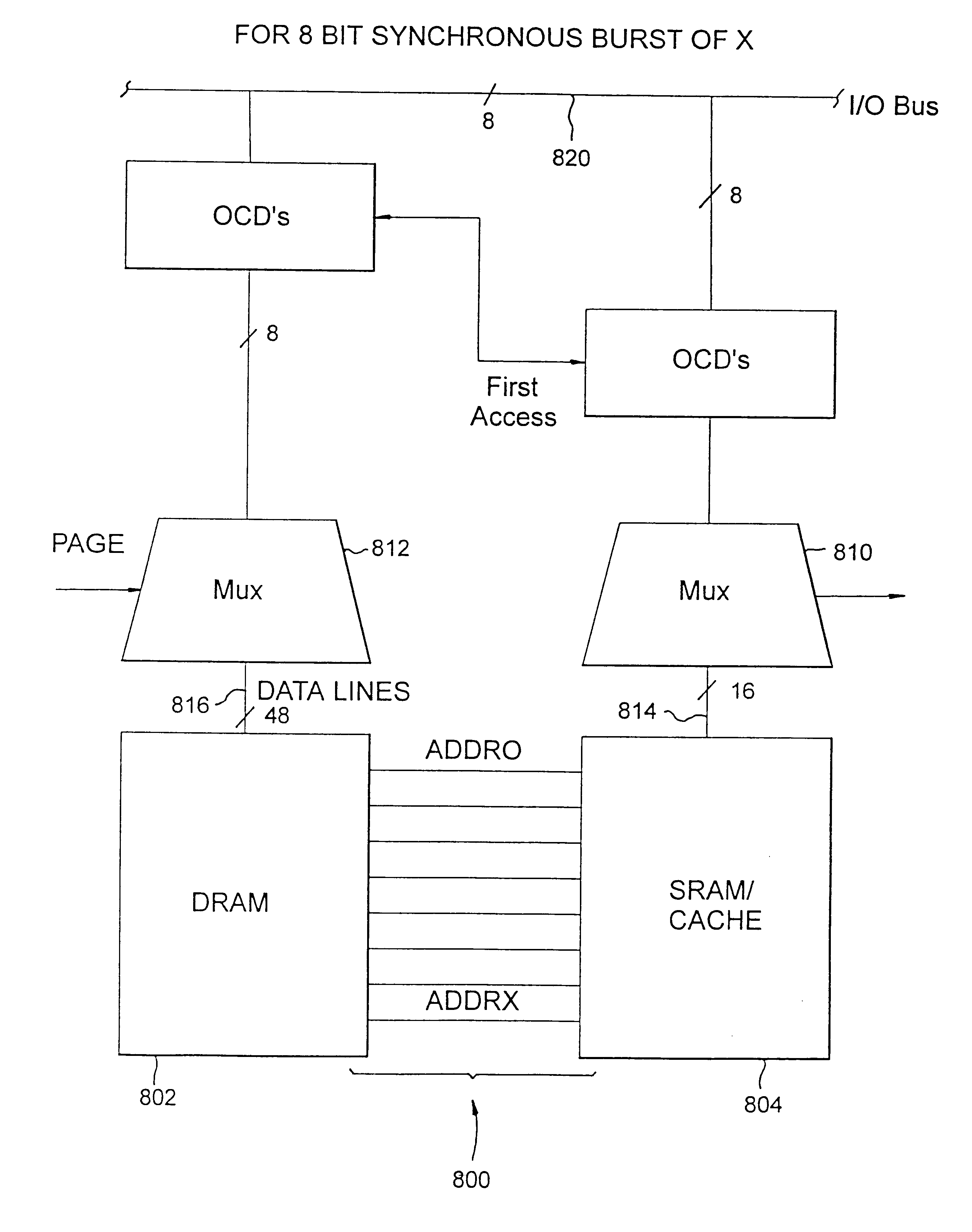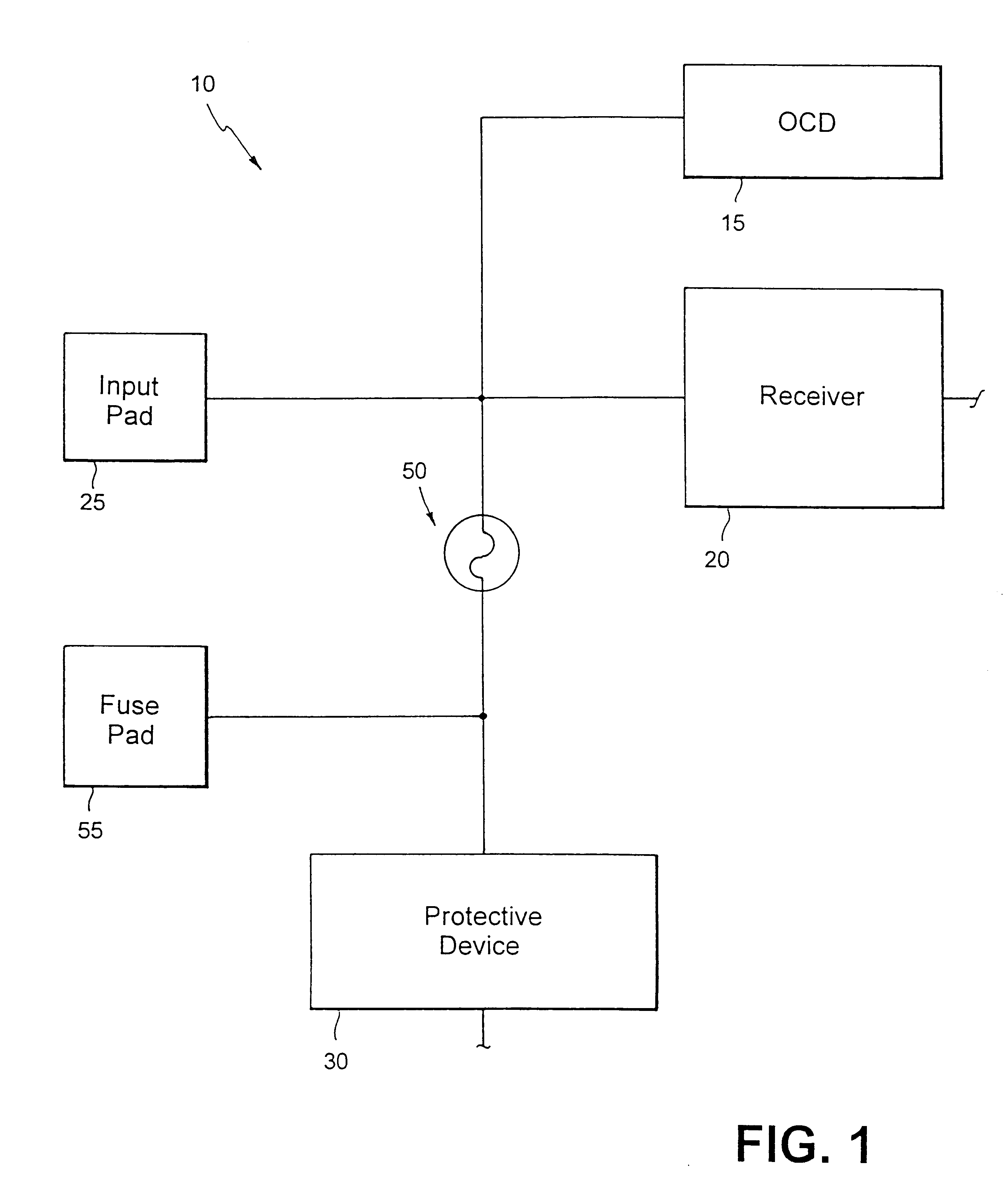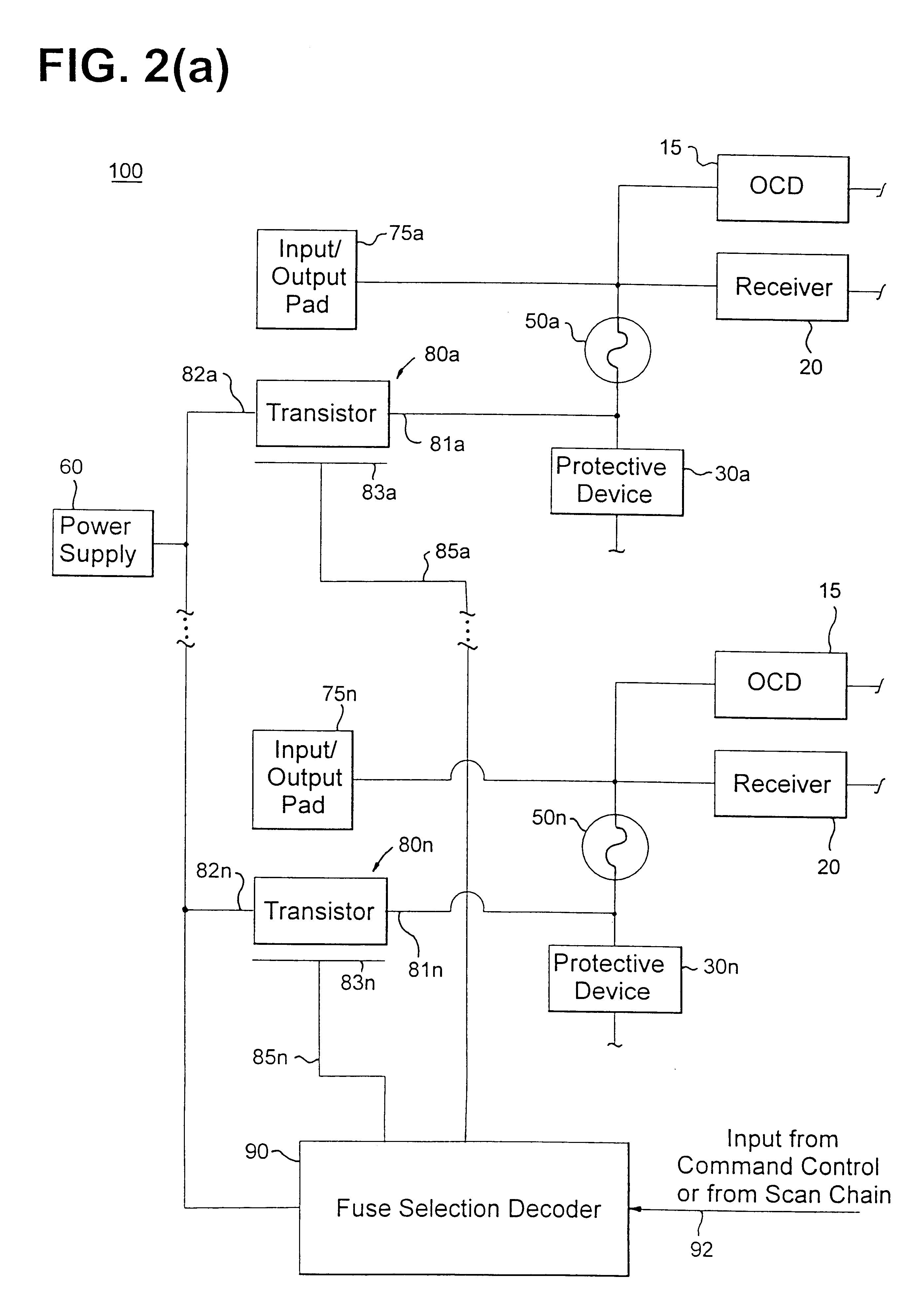Impedance control using fuses
a technology of impedance control and fuse, applied in the field of computer system and memory system architecture, can solve the problems of inability to correct circuit problems introduced during final module construction, insufficient cache memory provision, etc., and achieve the effects of reducing capacitive and inductive loading, reducing latency, and reducing the amount of fuses
- Summary
- Abstract
- Description
- Claims
- Application Information
AI Technical Summary
Benefits of technology
Problems solved by technology
Method used
Image
Examples
Embodiment Construction
FIG. 1 illustrates a circuit structure 10 for reducing capacitive loading of a memory chip / device, e.g., a DRAM chip, having a common input / output terminal according to a first embodiment of the invention. As shown in FIG. 1, an off-chip device (OCD) 15, for example, a device for communicating to a next chip, and a receiver device 20 for receiving address / data signals from a previous chip, for example, are both connected to an input pad 25 which is the physical input for the chip. A commonly known protective device or circuit 30 is built into the structure in order to protect the receiver and OCD devices from destructive electrostatic discharge (ESD) during manufacture and handling. According to the invention, the protective device 30 is removed from the structure 10 after the chip has been placed in the final assembly, e.g., in a module or directly mounted on a substrate or printed circuit board with other chips, by positioning and subsequently opening a fuse device 50 in the struc...
PUM
 Login to View More
Login to View More Abstract
Description
Claims
Application Information
 Login to View More
Login to View More - R&D
- Intellectual Property
- Life Sciences
- Materials
- Tech Scout
- Unparalleled Data Quality
- Higher Quality Content
- 60% Fewer Hallucinations
Browse by: Latest US Patents, China's latest patents, Technical Efficacy Thesaurus, Application Domain, Technology Topic, Popular Technical Reports.
© 2025 PatSnap. All rights reserved.Legal|Privacy policy|Modern Slavery Act Transparency Statement|Sitemap|About US| Contact US: help@patsnap.com



